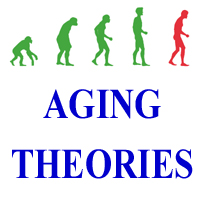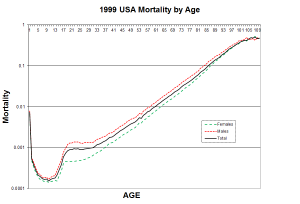The effectiveness and deployment of protective masks is crucial to any efforts toward avoiding massive reinfection and death during any near-term attempt at re-opening of the economy.
It is increasingly apparent that currently the main infection process is face-to-face transfer of virus-containing particles or droplets, especially tiny particles that can form invisible clouds in the air. People can wash hands, disinfect, social-distance, and avoid touching people and things, but they can’t stop breathing. Transmission is increased by speaking and exertion and especially by shouting or singing. The six-foot social distancing requirement helps but tests and observations show visible droplets can be projected much further than six feet and invisible particles can exist in the air for a considerable period. Prowling a supermarket’s aisles and checkout lines could amount to trolling for virus.
Outside activities are less dangerous because air currents could be expected to disperse virus clouds and ultraviolet light in sunlight can be expected to destroy the virus. Mass transit (buses, trains, subways, and airplanes) in which people breathe the same air as hundreds of other people for extended periods (during which social distancing is impossible) is clearly a major risk.
The main criterion for a biohazard mask (or mask for dust hazards) is the effectiveness with which small particles (0.3 microns – micrometers) in size are filtered in the inhaling direction. The gold standard is the N95 (or equiv) disposable mask that can filter out 95 percent of such particles. In a biohazard context a single individual could use multiple N95 masks per day and the Covid-19 situation has resulted in an availability crisis for the N95.
“N95” is a U.S. CDC NIOSH specification and different mask designs can and do meet the specification. Most masks are produced in China. KN95 is a Chinese specification that is very similar to the N95. N95 masks are now essentially unobtainable except for health workers but some KN95 (or similar FFP2, P2/AS, etc.***) and surgical masks can be found on the Internet. These masks usually have metal strips that can be bent to improve the seal around the nose area. In a relatively non-hazardous situation, a disposable mask can probably be safely reused multiple times by the same person.
Many U.S. localities are now requiring “face coverings” in public places with limited social distance. However, face coverings vary enormously in small-particle effectiveness. Surgical masks filter 60 – 80 percent of 0.3 particles. Thin “Designer” or “Fashion” masks could be less than10 percent effective*. You can do the math.
An obvious move would be for the U.S. Government to provide free and effective reusable (washable) masks for citizens or at least provide a detailed design specification for manufacture of such masks. However, the U.S. Government’s xenophobic position regarding China (including tariffs) is a major impediment to essentially admitting that the U.S. desperately needs Chinese masks. The Government’s current attempt to claim that China is somehow responsible for Covid-19 would also clash with using Chinese sources. Rapid production of millions of effective cloth masks would also likely involve Asian sources.
The U.S. CDC is recommending against citizens using N95 or surgical masks and is also recommending citizens make their own homemade cloth mask from two layers of T-shirt fabric (likely to be ineffective in protecting wearers)*.
The Government has also been actively promoting the idea that masks are mainly or even entirely for the purpose of protecting other people from being infected by the wearer. The Vice President famously refused to wear a mask in a mask-required biohazard facility on the grounds that he knew he was not infected and therefore the mask was unnecessary and he could ignore all the signs and regulations requiring a mask. Of course, any citizen could take the same position: “I am asymptomatic and there is a 99 percent chance I don’t have it so I don’t need to wear a mask.”
Indeed, surgical masks were designed to protect open wounds from infection by the wearer. However, N95 and similar masks*** are designed to and mainly protect the wearer. Some masks (including some N95s) actually have valves that allow unfiltered exhaled breath to be released, sometimes directly forward from the wearer, so that the filter only operates on inhaled air. For masks without a valve, and unless the mask is worn tightly, exhaled air tends to bypass the filter by pushing the mask away from the face. Note that more effective masks also involve more air resistance to breathing, which is the reason for the valves. Some medical conditions can be worsened by using the more effective masks.****
It is human nature to be more concerned with your own and your family’s health and safety than that of “other people.” Death from Covid-19 is like drowning except that instead of being over in three minutes it could take three weeks! Survivors can have ongoing medical issues. Even the semi-suicidal among us should fear Covid-19.
* See New York Times articles on mask effectiveness 4/2020.
** CDC Web Site Covid-19 5/6/2020
*** https://multimedia.3m.com/mws/media/1791500O/comparison-ffp2-kn95-n95-filtering-facepiece-respirator-classes-tb.pdf Compares masks similar to N95 (KN95, FFP2, P2 AS/NZA, Korea KMOEL – 2017-64, DS FFR (Japan)). See NIOSH on tests of foreign masks below.
**** https://en.wikipedia.org/wiki/N95_mask https://www.cdc.gov/niosh/npptl/respirators/testing/NonNIOSHresults.html

 WHY is it that despite more than 150 years of effort there is still no scientific agreement on even the nature of human aging? Is aging the result of fundamental limitations that could not be overcome by the evolution process, or a consequence of the lack of an evolutionary need for our ancestors to live longer, or the result of our possessing an aging program or biological suicide mechanism because populations of our ancestors received an evolutionary benefit from limiting individual lifespan? Many non-science factors act to bias thinking about aging and aging theories, mainly toward fundamental limitation theories or more recent non-programmed aging theories even though empirical evidence favors programmed aging theories. This is one of the reasons that no wide scientific agreement on even the nature of aging (much less details) exists today or is likely in the near future.
WHY is it that despite more than 150 years of effort there is still no scientific agreement on even the nature of human aging? Is aging the result of fundamental limitations that could not be overcome by the evolution process, or a consequence of the lack of an evolutionary need for our ancestors to live longer, or the result of our possessing an aging program or biological suicide mechanism because populations of our ancestors received an evolutionary benefit from limiting individual lifespan? Many non-science factors act to bias thinking about aging and aging theories, mainly toward fundamental limitation theories or more recent non-programmed aging theories even though empirical evidence favors programmed aging theories. This is one of the reasons that no wide scientific agreement on even the nature of aging (much less details) exists today or is likely in the near future.